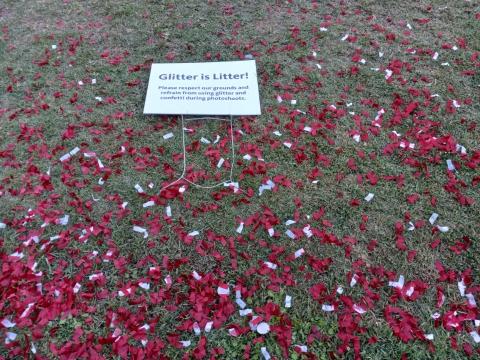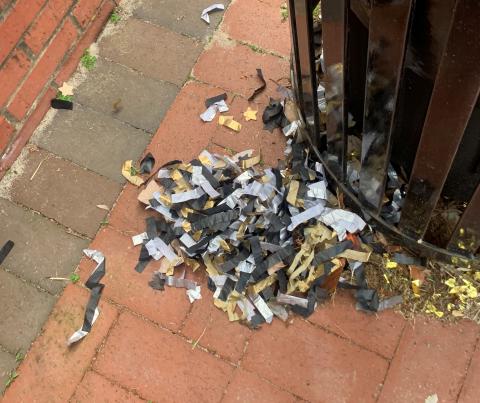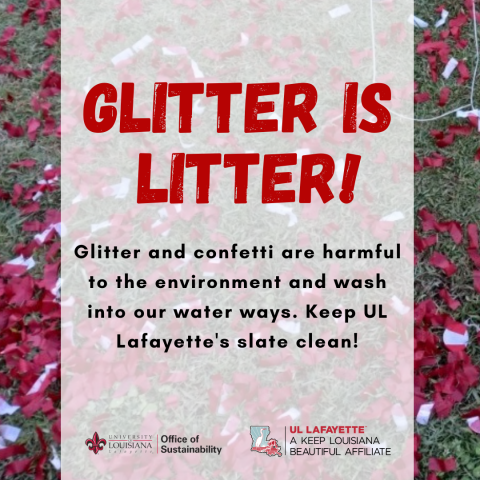Glitter is Litter
Glitter: Cradle to Grave
Glitter and confetti are both popular mediums used to celebrate special occasions and adorn materials but both damage the environment in many ways.
‘Cradle to grave’ is a term that describes and evaluates the lifecycle of a product, and how it impacts the environment throughout production, use, and after being discarded. Looking at glitter and confetti through this lens can help to understand its impact on a bigger scale. Glitter is normally made of plastic, aluminum, and titanium oxide, and produced and shipped on mass scales. Traditional confetti are made of paper and other harmful plastics such as polyvinyl chloride. Once it is purchased consumers use it for many different purposes, one of the most common being to scatter. After it is used, the glitter/confetti are strewn across the ground, which becomes litter.
It may seem harmless, since it is hardly visible, but this is exactly what makes it so dangerous. Glitter is considered a microplastic which is a major source of ocean, air, and soil pollution. Glitter is washed out from where it is left and runs through waterways. Litter filtering systems don’t catch glitter because it is so small. Sea life consumes the glitter, and the toxins from the plastic leak into the habitats, as well drinking water. And while many think confetti breaks down quickly, it can actually take over 1,000 years to degrade. It is also just as easily washed into waterways if not properly disposed of, causing significant harm within bodies of water. The damages of these pre-made microplastic far outlive short time it is used for.
Celebrating at UL
Many students use the beautiful campus grounds as backdrops while celebrating admissions, graduation, and many other important milestones. While our campus is the perfect place to celebrate, it is important to remember that ‘Glitter is Litter’. Using confetti or glitter is harmful to the university and cannot be effectively cleaned, so it spreads throughout campus and into Cypress Lake, our waterways, and into the Vermillion River.
It is best to stay away from glitter confetti all together, but there are some more environmentally safe alternatives. There are brands like TodayGlitter and BioGlitter, which make glitter out of cellulose and eucalyptus extract, which disintegrate in water without harming the environment. Another alternative is pulling confetti from nature, such as dead leaves or flower petals and hole punching them to make your own sustainable confetti. It is important to Keep UL Lafayette Beautiful.


Blog post written by Lola Lancaster

